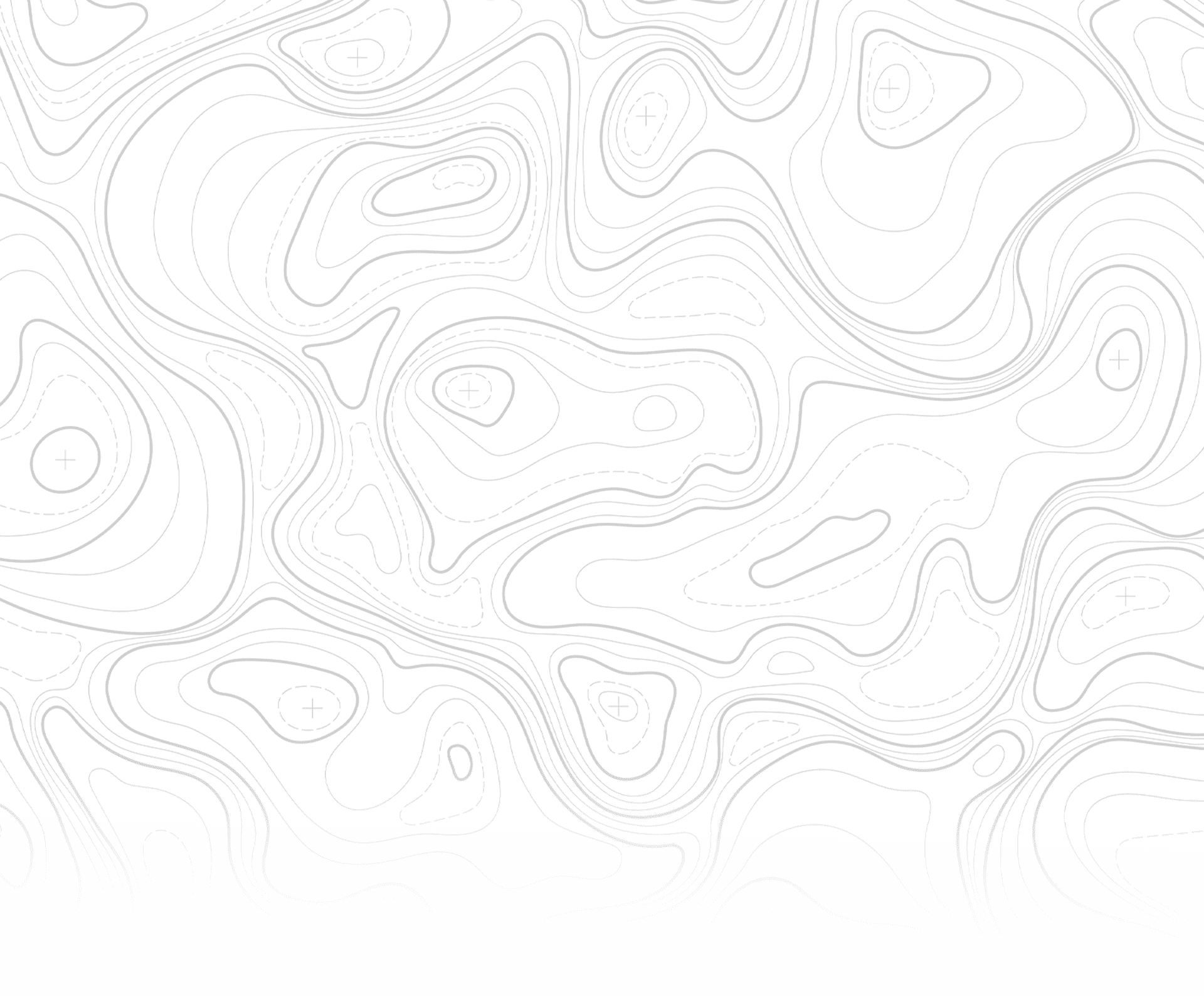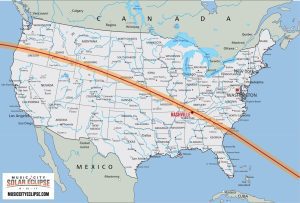
SOLAR ECLIPSE FAST FACTS:
- First total eclipse on American soil since 1991 (Hawaii)
- First total eclipse on the mainland since 1979 (Washington, Idaho, Montana, North Dakota)
- First total eclipse to sweep across the entire country since 1918
- With the internet, this will be the largest astronomical event in US history.
- The last total eclipses visible in Nashville were July 7, 1442, and July 29, 1478, (right at sunrise) with annular eclipses Dec. 25, 1628, (right at sunrise) and Oct. 19, 1865.
- The next total eclipse Nashville can anticipate seeing is on Aug. 16, 2566, with 2 minutes and 15 seconds of totality.
SAFE VIEWING TECHNIQUES
View Safe Viewing Techniques for direct viewing, indirect viewing, and safe photography.
TIME & DATE
The eclipse will be: Monday, August 21, 2017
Partial eclipse begins: 11:58 a.m. CDT
Start of totality: 1:27 p.m. CDT
Total eclipse duration: 1 minute 55 seconds
End of totality: 1:29 p.m. CDT
Partial eclipse ends: 2:54 p.m. CDT
Times are accurate for viewing in downtown Nashville and may vary slightly based on exact location.
Note that the total solar eclipse will be seen in Nashville and locations north and east. Areas south and west of Nashville will only see a partial solar eclipse. Places such as Columbia, Dickson, Fairview, Franklin, Kingston Springs, and Spring Hill will only see a partial eclipse.
- The total solar eclipse first enters the state at 1:25 p.m. CDT and leaves the state at 2:36 p.m. EDT (due to the time zone change). The Moon’s shadow rushes across the Earth’s surface at about 1,800 miles per hour.
- The entire event lasts about 3 hours, from the start of the partial eclipse through totality until the Moon is no longer overlapping the Sun.
Answers to where you can watch, the time of the eclipse, and more can be found at: visitmusiccity.com/eclipseFAQs.
COMMONLY ASKED QUESTIONS
Nashville is having a solar eclipse? Yes! Mark your calendar for August 21, 2017. Beginning at about noon, the Moon will begin to travel in front of the Sun, a solar eclipse. The path of this eclipse crosses the entire continental US, so this is also a nationwide event, but a section of Middle Tennessee is fortunate to be in the path of totality. Nashville is the largest city to experience totality during this eclipse!
Didn’t I see a solar eclipse just a few years ago? Depending on where you were living at the time, probably not a total eclipse. The last total eclipse to touch the continental US was in 1979 (northern tier states). Vacationers traveled to Baja Mexico and Hawaii in 1991, the last time any part of the US saw a total eclipse.
If you lived in Georgia or the Carolinas you might remember the eclipse of March 1970. The path of the total eclipse skirted along coastal areas of the southeastern US before going just off the coast, missing New York and Boston. The path hit land again going across Nova Scotia, famously referenced in the Carly Simon song “You’re So Vain.”
When was the last total eclipse in Nashville? The last total solar eclipse visible from Nashville happened July 29, 1478. It is on average almost 400 years between total eclipses for a given location. Partial eclipses are more common, but are often not noticed. Unless you know that a partial eclipse is in progress, the difference in light is not usually noticed by our eyes.
Do I need to be in a particular location to see it? If you want to see the total eclipse (and you do), yes! You must be within the narrow path of the Moon’s shadow. The nearer you are to the center of the path, the longer the eclipse will last. At the edge of the path totality lasts only seconds. See our maps for where you should be. There will be viewing events in many locations as well. If you are lucky enough to live IN the path of totality, relax and enjoy the view!
Where should I look? We are looking toward the Sun, BUT – before you look at anything, make sure you have approved solar glasses or solar shades handy. During the partial phases, it is NOT SAFE to look at the Sun with anything other than these. Sunglasses aren’t enough – nothing but approved solar glasses will work. Your eyesight is too important to risk, and damage may not be obvious for several hours. Instead of looking directly at the Sun, observe around you; look at the shadows cast by leaves, and notice how they all look like tiny images of the crescent Sun. Or have fun with some of our other indirect methods of viewing the Sun. Use safe solar glasses to directly observe the Moon as it slowly moves across the Sun. Any place where you can see the Sun is a great place to be.
When should I look? The partial phase begins in the Nashville area about noon on Aug. 21, 2017. Join a viewing group and enjoy watching as more and more of the Sun disappears. Exact times require knowing your exact location, but you want to be outside no later than 1:25pm to watch the last sliver of Sun vanish behind the Moon as the shadow rushes over us. This moment – with the Sun completely blocked by the Moon – is the ONLY time when it is safe to look at the eclipse in the darkened sky! Stars and planets will be visible alongside the awe-inspiring sight of the Sun’s outer atmosphere, the corona. All too soon, the faintest bit of Sun will peek out and you will need to use solar glasses again.
How long does the eclipse last? A solar eclipse has two parts: a partial phase, where the Moon only blocks some of the Sun, and then the total phase, where the Moon completely blocks the Sun. The partial phase lasts about three hours from start to finish, depending on your location. IF you are in the narrow path of totality, the total phase (in the middle of the partial phase before and after) lasts a maximum of 2 minutes 40 seconds at the center of the path. On the edge, total eclipse will last only a few seconds.
Is it safe to take pictures with my camera? You should NOT look at a viewfinder at the Sun…this is the same thing as looking at the Sun! Most cameras would have a very difficult time capturing the very bright partially eclipsed Sun. Find an indirect projection method of viewing the partial eclipse, and photograph that! You can put an approved solar filter over your camera lens as well. For photography advice from a professional eclipse chaser, see Fred Espenak’s page. During totality your camera will need the flash disabled, but remember that for most cellphone/point-and-shoot cameras the Sun will look tiny. A nice foreground will make an image like this memorable. There will be many professional pictures taken, so you can also just relax! Use most of the very short time of totality to watch this awesome once-in-a-lifetime sight.
What is the difference between a partial and a total eclipse? Partial eclipses happen when the Moon does not quite pass directly across the Sun. A broad area (in 2017, all of the United States) outside the narrow path of totality will see a partial eclipse, but often the entire eclipse is partial. Most of us have seen – or could have seen – a partial eclipse. In Nashville, there was a partial eclipse late in the day on Oct. 23, 2014. A partial eclipse is interesting, but viewing a total eclipse is an awe-inspiring event that you will not forget.
Why is the Moon exactly the right size to cover the Sun? It isn’t always. Sometimes the Moon is at the farthest point of the elliptical orbit when it crosses in front of the Sun, and is then a bit too small to block the entire Sun. The eclipse is then annular: a ring of bright Sun is left around the Moon at maximum eclipse. We are simply lucky that our Moon is so large that much of the time it does completely block the Sun during an eclipse. Moons on other planets also eclipse the Sun as seen from there; we’ve watched a solar eclipse on Mars, for example. The Moon is slowly moving outward from the Earth. In another 600 million years or so, the Moon will no longer be able to cover the Sun, so enjoy the current view!
How do we actually know when an eclipse will happen? Eclipse predictions have been attempted for centuries. As soon as human civilizations began keeping records, astronomers noted that there were patterns to the movements of the Sun, Moon and planets. Even before the exact layout of the solar system was understood, these patterns were used to attempt predictions. Major events in the sky were understood as omens, so some effort went into predicting the movements of the heavens. The Greeks understood the geometry behind eclipses and could use this for approximate predictions.
Lunar eclipses are easy, because they are seen by half the planet. Total solar eclipses, though, are more difficult as the shadow cast by the Moon on the Earth is very small, so accurate calculations of the Moon’s orbit are needed. Since Isaac Newton we have used his gravitational equations to accurately predict eclipses and other solar system phenomena, and today’s models even take into account the exact shape of both the Earth and Moon as determined from spacecraft. We know, for a given location, exactly when an eclipse will happen for thousands of years into the future.
When is the next total solar eclipse after 2017? For Nashville, not until August 16, 2566! Between then and now, there will also be two annular eclipses: March 26, 2267, and March 27, 2294. For the continental US, though, we get another total eclipse on April 8, 2024. The path sweeps west of Nashville through Arkansas and Illinois. We’ll have to drive a bit to see that one! Then we’d be off to Montana or North Dakota in 2044.
There are one or two solar eclipses every year on planet Earth. So if seeing one turns you into an eclipse chaser, after August 2017 you can travel to Chile in 2019 or Chile/Argentina in 2020.
Does the temperature change during the eclipse? This would make a great science project for schools during the eclipse! Yes, the temperature will fall a bit during the eclipse. The ground and air hold heat and cool slowly, so it will not instantly fall to a nighttime temperature. There have been interesting studies done on the effect of an eclipse on weather, perhaps there will be opportunities for citizen science projects with the 2017 eclipse.
Is this the end of the world? No! Solar eclipses happen every year, mostly unnoticed because they occur over the ocean or other remote areas. There is really nothing special about the eclipse – the Moon casts a shadow into space opposite the Sun just like everything else in space. When we are in the shadow on a day when it falls on Earth, though, we get the magnificent view of the eclipsed Sun.
Is it dangerous to be outside during a solar eclipse? No! It’s just the Sun and Moon in the sky. We just normally don’t get to see them this close together. Every month at the new moon the Moon travels just above or just below the Sun. An eclipse happens when the alignment is exactly right so that the Moon travels across the Sun from our point of view. What IS dangerous is looking directly at the Sun with unprotected eyes. NEVER use any kind of optical aid – telescope or binoculars – without an approved solar filter on the front. Learn more about safe viewing techniques.
How do other cultures view solar eclipses? Every culture has stories to explain what is happening. Before recorded history, a solar eclipse would have only happened once in many lifetimes and would have been a terrifying random event. Many cultures imagined that something was eating the Moon, and made loud noises to scare away the animal/demon responsible. This was successful, as the Sun always came back.
Solar Eclipse Myths From Around the World (National Geographic)
There are also modern myths and superstitions. Remember, this is the same Sun and Moon that are always in our sky. We are just looking at them at a beautiful angle on eclipse day, so there are no special hazards to our health other than to our eyes.
